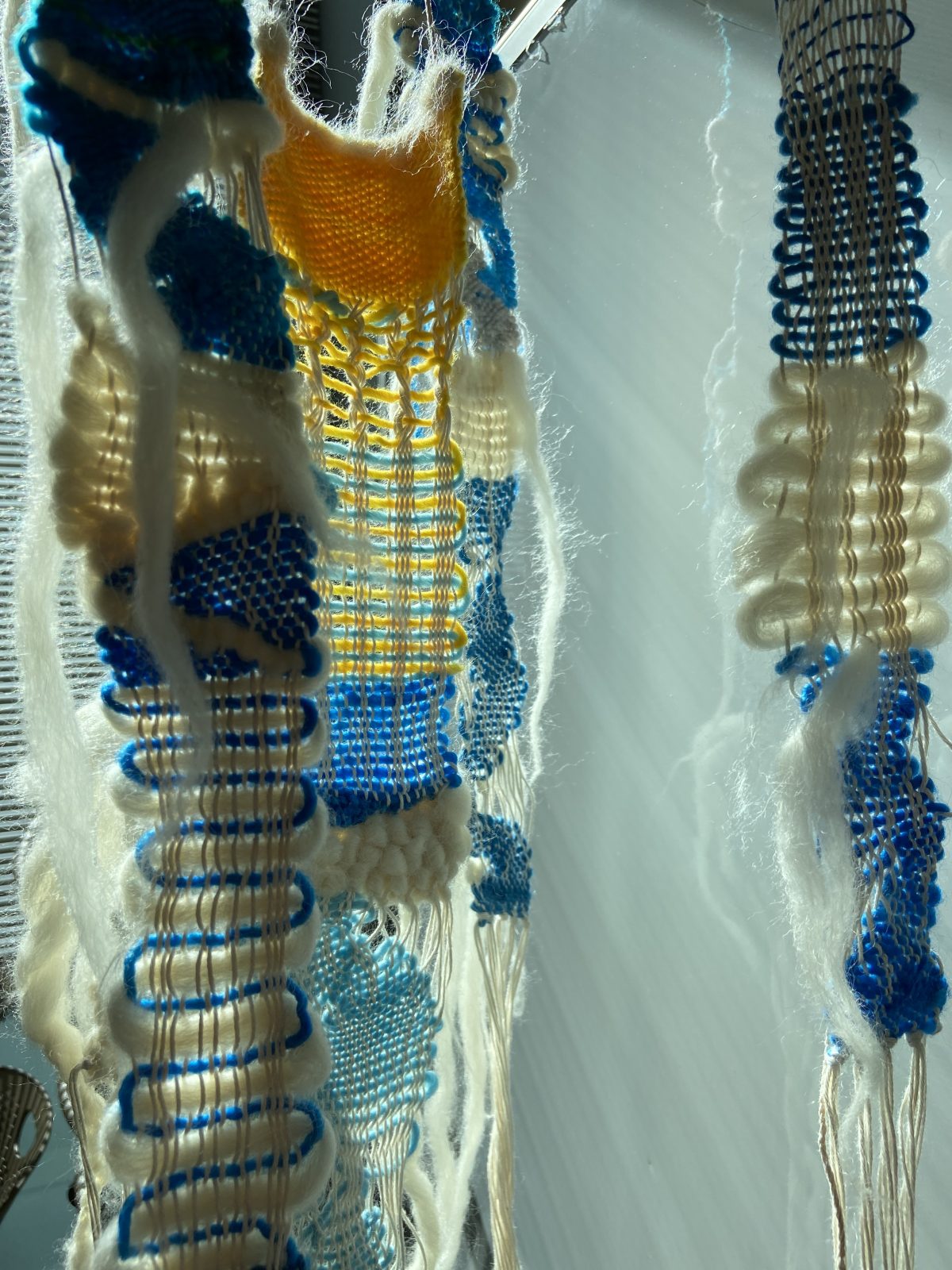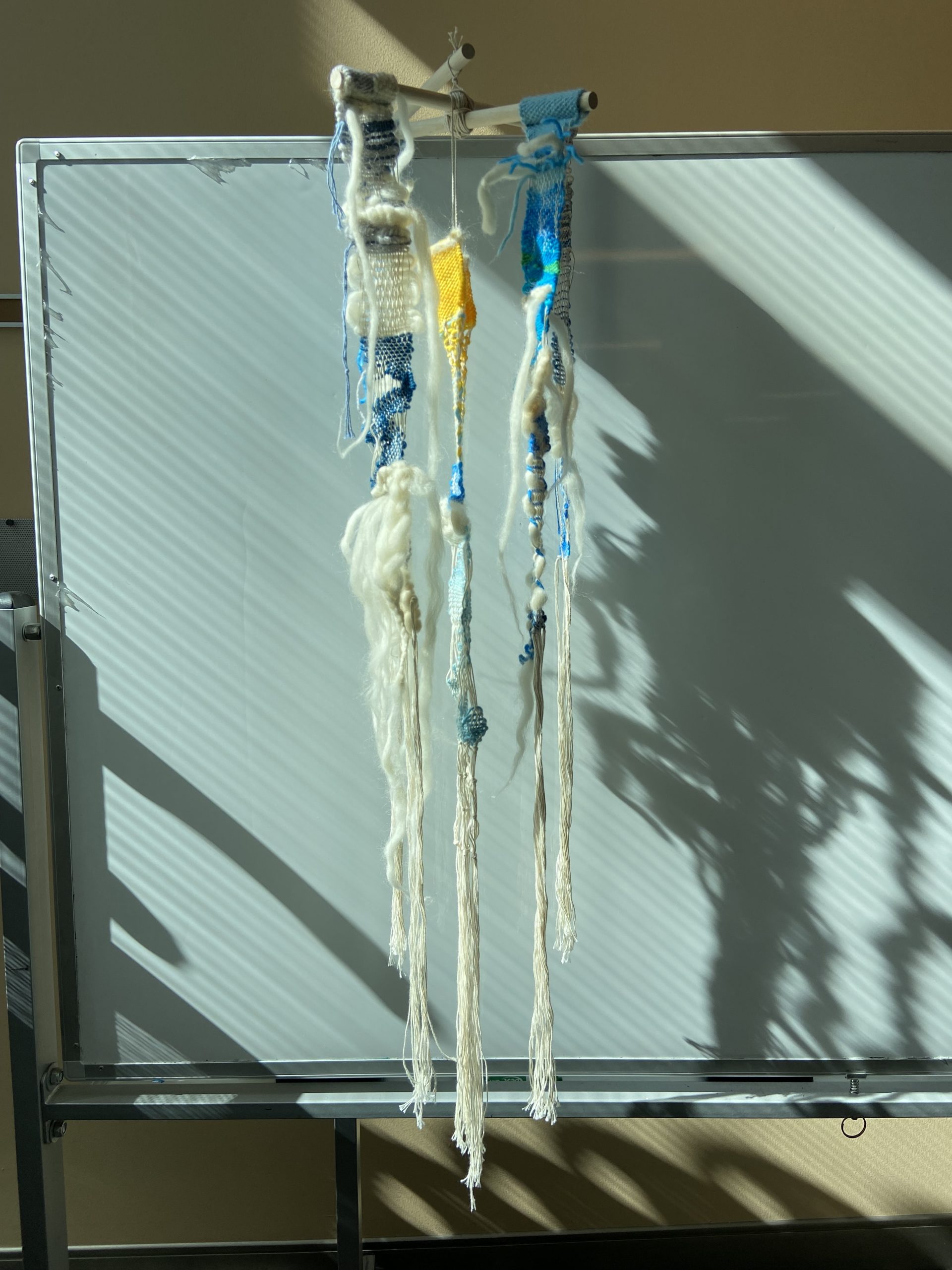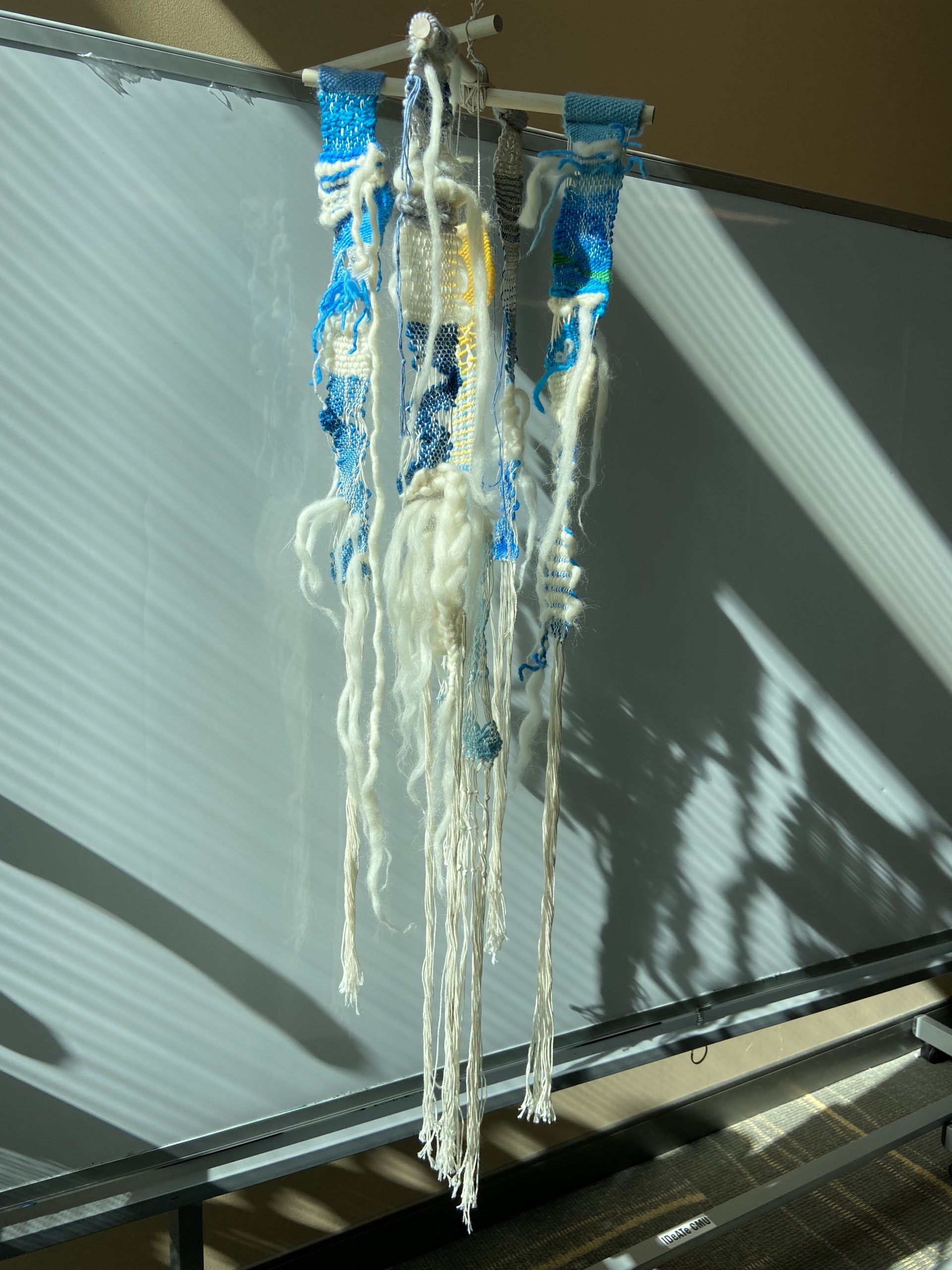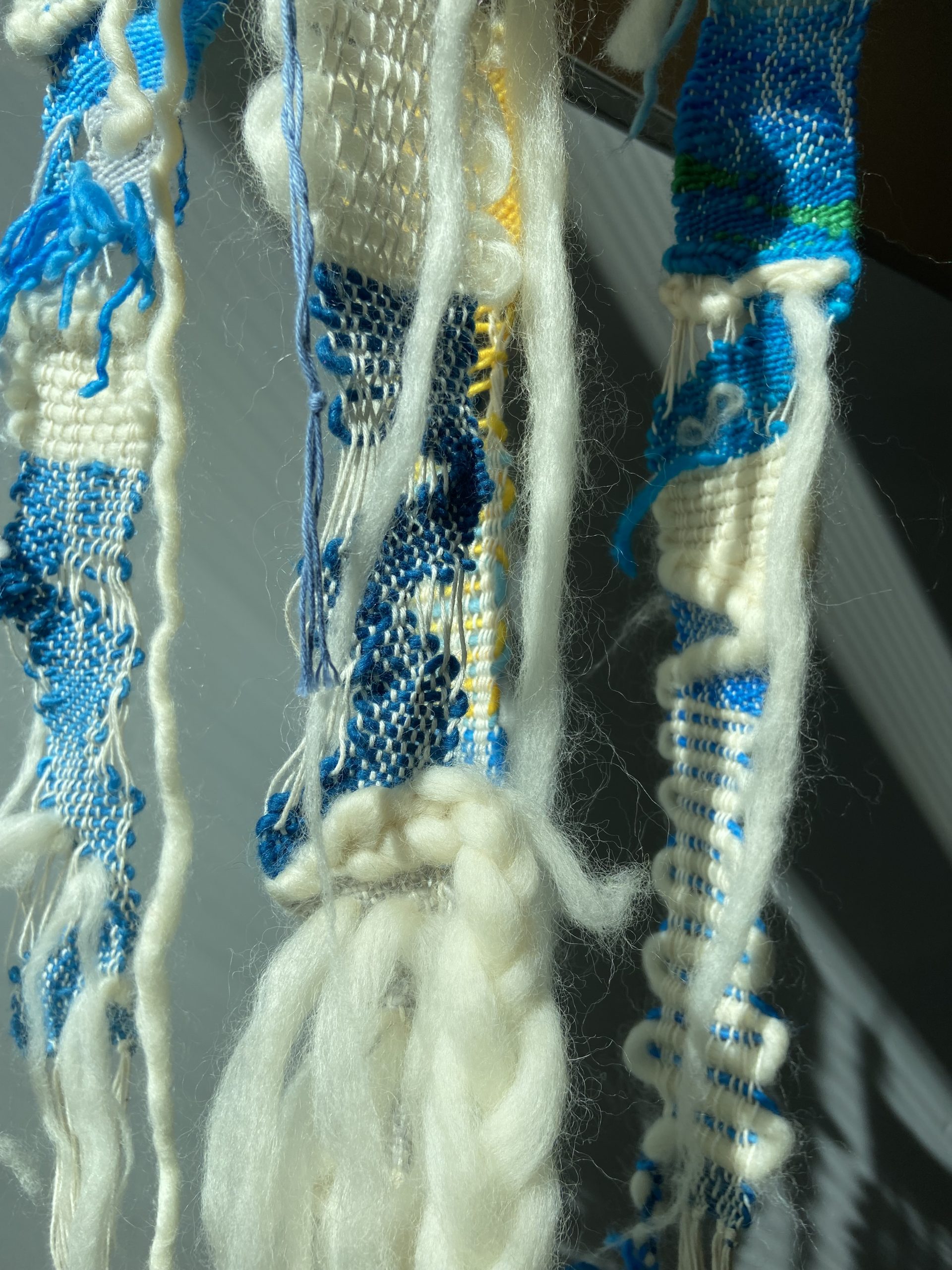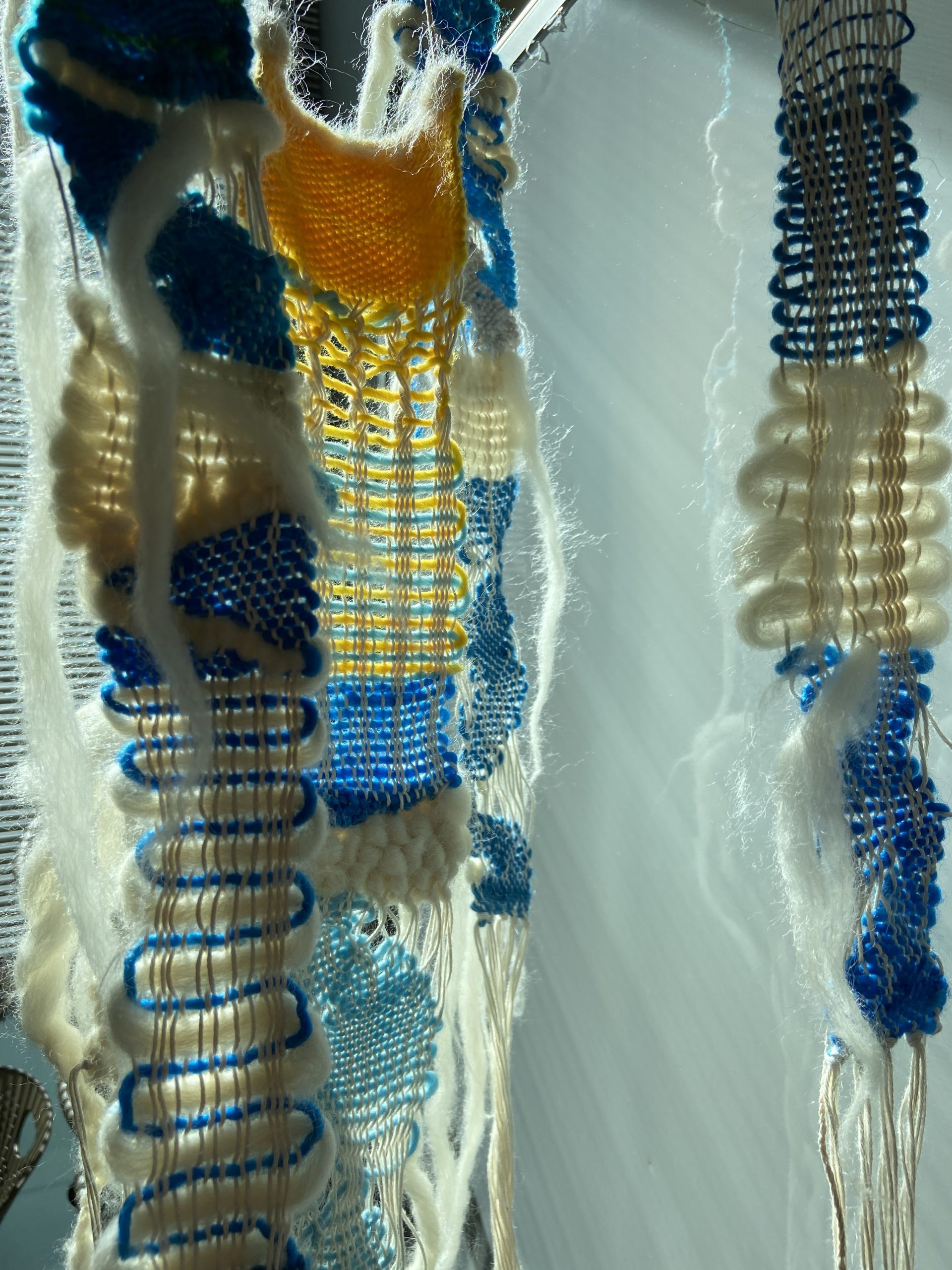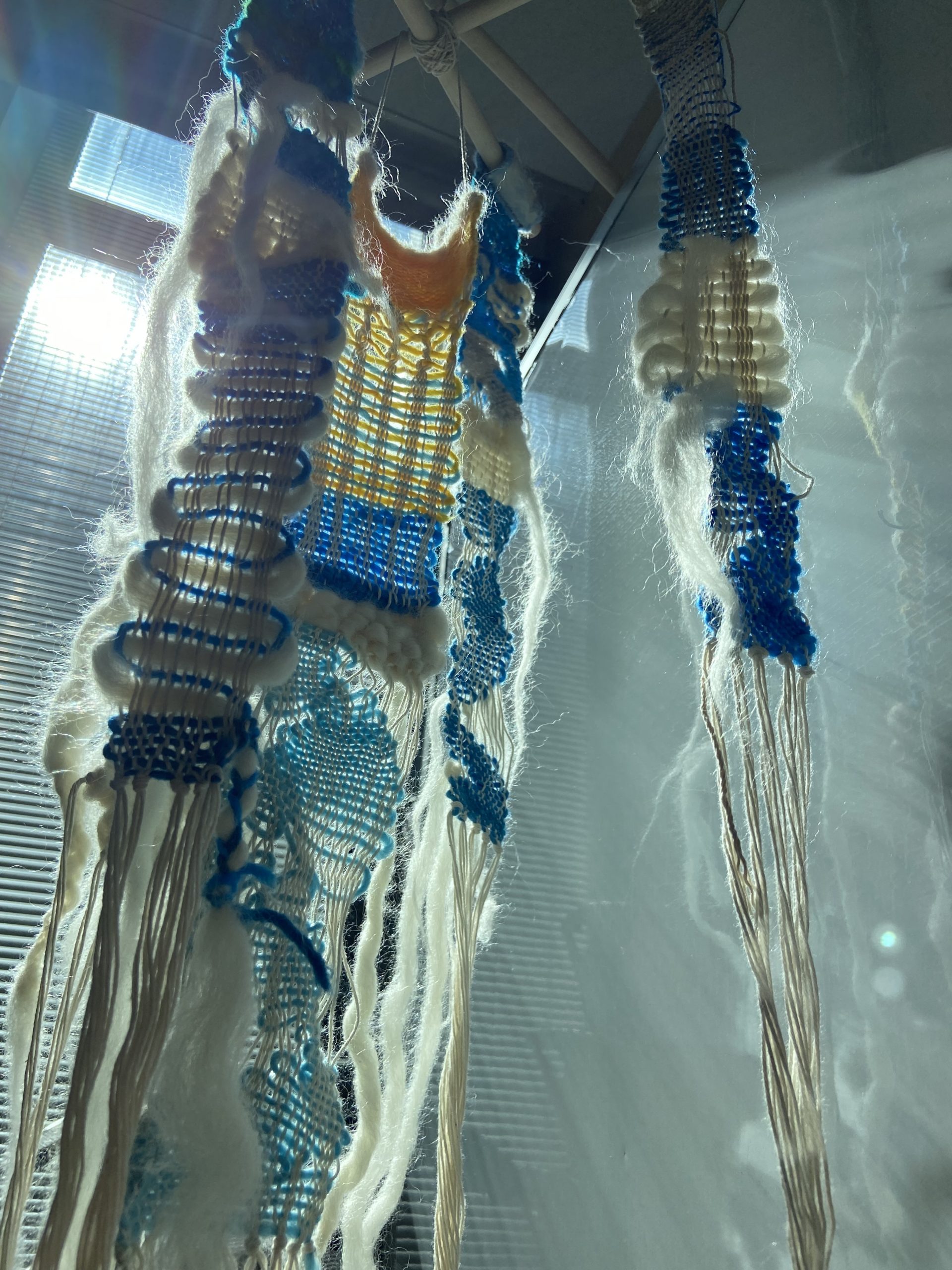Process
One of the biggest inspirations for my weaving is one of the weavings from a past student of this course, which we saw in class. It is the one with the red warp threads and metal pieces at the bottom. This weaving made me think of wind chimes. This then made me think of how fabric moves when wind blows on it. The flowing movement reminded me of water, the ocean, so I decided to draw inspiration from the sea and everything related to it. For instance, the more obvious inspirations came from the colors –blues and some greens and white. But I also thought about water caustics –the way the bright, warm sun causes those irregular, dancing reflections of light underwater. I wanted to find ways to incorporate all of those aspects of the ocean to turn the weaving into more of an immersive experience than just a piece of fabric to look at.
Regarding that “immersive experience,” I initially pondered about how it would feel like to walk through an installation of tall, long, flowy weavings. However, due to time constraints, I realized that that project idea would be too ambitious for me to accomplish, so I decided to keep my weaving small but still incorporate that 3D aspect that I originally thought of.
The first few inches of my weaving were purely an experimentation and familiarization process, not thinking much about color or form; it was more for skill-building and practice. But as soon as I constructed an image of what I wanted to make for my final weaving, I split up the warp threads into 5 sections to make 5 different weavings that I would later assemble into a “wind chime.” This part of my weaving was also highly experimental. I realized that I often get too caught up in my own perfectionist tendencies, so I decided to let my fingers weave fluidly as ideas came to me, rather than planning every detail of my weaving from the get-go. I figured that if I wanted to portray the fluidity and calm of the ocean, maybe I should also try to adopt the same sort of mindset while weaving.
What Worked Well
Because of how highly experimental my entire process was, I feel like I was able to embody that acceptance of fluidity and slightly messy experimentation that resembles the fluctuating nature of the ocean. The fact that my warp thread increasingly got looser and looser the further down I went along my weaving also contributed to the irregularity of my weaving. Moreover, because I was weaving five separate sections simultaneously, I could vary the “patterns” and shapes I weaved along the lengths of the weaving and beat them with my fingers rather than with the shuttle. Something else that helped me convey the flowy nature of the sea was the not-spooled wool that I used. I really liked the texture and diversity in volume it added to my weaving, as I tried to keep as much of the texture intact as possible. I also realized that instead of applying it in a regular weave, using it with soumak made better use of its voluminous shape.
I did not want to use the first few inches of weaving where I was mainly practicing different techniques, but this portion was too close to the 5-sectioned portion that I did want to use, so I had to needle-felt that intersection in order to keep both portions of my weaving intact after separating them. I fortunately had the perfect amount of plain weave at the starts of each of my 5 smaller sections of weaving to needle-felt and then loop to fit a dowel through for hanging. This almost felt miraculous to me, as it worked out so much more smoothly than I thought it would prior to Olivia advising me to needle-felt.
Improvements & Changes
I would have liked to have woven longer, wider strands, because my weaving felt very small and could not, therefore, really induce much of an “immersive experience” as I would have liked. Scale could improve how much viewers can sense the feelings and experiences I wanted to portray through my weaving.
I also would like to vary the lengths of each weaving section more to further lean into that theme of irregularity. The fact that I had to needle-felt one edge of all 5 sections of weaving did feel a little limiting in how I wanted to vary the length at which the weaving would hang from the dowels. I would still incorporate needle-felting for some pieces, but having a few other pieces hang from the dowels through the warp threads instead would have also been an interesting way of adding irregularity to my weaving.
What I Learned
Because I was initially intending to make my weaving a wind chime, I wanted to embrace the ocean theme and use recycled glass for the chime portion of my weaving. I initially thought of breaking a tinted glass bottle and sanding the pieces myself, but due to time constraints, I did not manage to do that. I also considered somehow incorporating a “DIY” ocean drum into the wind chime to further embody the sea in an auditory sense. In order to make my weaving an immersive experience and not just a visual installation, I wanted to incorporate sound.
However, after hearing what my peers commented on my (“mute wind chime”) weaving, I realized that maybe not having incorporated any sound-causing components was a better choice. Someone mentioned that despite my weaving being very silent, they could still somehow “feel” sound coming from it, which was very interesting to me. I had not intended to instigate that sort of experience from anyone viewing my weaving. I really like that notion of being able to incite feelings or senses that are not actually explicitly present but that can be just felt from other external cues that the piece of work contains. I hope to further explore different ways to achieve this in future projects.
Five Directions
- Large-scale (bigger than human-scaled) installation of weavings taller than the average person, placed in a large room with a tall ceiling.
The weavings in this case would have to be much lighter in order to be able to flow similarly to how my final weaving did, though. - More weaving pieces in a larger/wider “wind chime” conformation, hanging at different lengths.
This would likely include maybe one more dowel to also vary the angles at which the pieces hang. - Use of vertical and horizontal weaving pieces and light source above to play with lights and shadows.
This would be more of an exploration of how I could portray the way light reflects and shines through the ocean onto a tapestry weaving. I could also explore with different kinds of materials that would allow for more light to pass through. - Ocean drum put together by weavings.
Since the common shape of ocean drums is circular, I could imagine a ring on the outside being the “ocean drum instrument” portion, while at the center would lie weavings going across the length of the ring, almost like a web. There could be some pieces that hang over the ring and flow down to keep that imagery of “flowy water.” - Actual (non-silent) wind chime with sound-making materials naturally found in the ocean and/or beach (e.g. sea glass, seashells), but also with human-made trash polluting our oceans today.
This would delve more into the current state of our very polluted oceans and how the beauty of the sea is tainted by our human-made pollutants.
